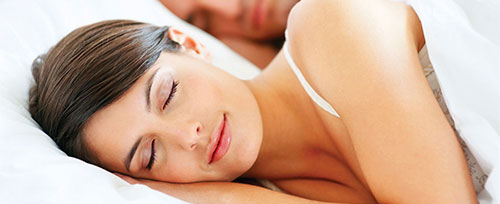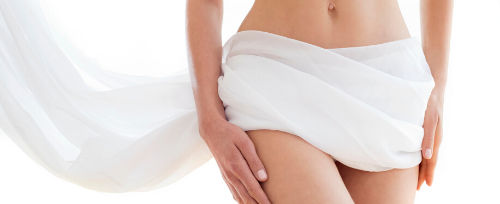Lasers have been a part of medical technology since the mid twentieth century, but the laser and its usages are being taken to new heights with increasingly modern technology. Within the realm of medical related high technology laser systems, a laser can be used in the fields of aesthetics, gynecology, and surgery.
In general, laser procedures have quickly gained popularity in the twenty-first century due to their wide application and minimally invasive nature that often yield fast results. Whether you are looking for something as simple as hair removal or something more serious like incontinence or nail fungus, consider speaking with a medical professional today about your available laser procedure options.

Types of Laser Procedures
Laser procedures are often used for a number of different conditions that range from aesthetic in nature to those that are internal. Though the type of lasers used may vary, the most common types of laser procedures offered today may include:
Lasers and 4D Skin Rejuvenation
To enhance skin rejuvenation in some patients, medical professionals use a laser. This procedure generally tightens, lifts, and plumps skin while simultaneously improving skin texture and reducing wrinkles. Patients often select this procedure to restore a more youthful look to their skin.
Lasers and Hair Removal
Lasers are commonly used for the aesthetic procedure of hair removal. This includes removal of hair from the legs, arms, under arms, neck, face, chest, and back. Many patients describe this laser procedure as a fairly painless way to lose large sections of unwanted body hair.

Lasers and Incontinence
A laser procedure may even be able to minimize symptoms of stress incontinence for those individuals who experience them on an ongoing basis. The procedure is minimally invasive and may be able to improve or restore an individual’s overall quality of life with urinary continence.

Lasers and NightLase (Snoring)
NightLase is a type of laser procedure designed to help individuals who suffer from snoring and/or sleep apnea by providing them with a better quality of sleep. The procedure may be able to reduce the effects of sleep apnea and make snoring softer by implementing a tightening of the oral mucosa tissue.
Lasers and Onychomycosis (Nail Fungus)
This type of laser procedure is used to alleviate toenail fungus. This simple treatment involves using the laser to heat through the depth of the nail and skin tissue affected by the fungus which then weakens and kills damaging nail fungus.
Lasers and Benign Lesions
Lasers are frequently used to remove benign lesions for aesthetic purposes. The precise nature of the laser allows the affected area to be targeted without harming surrounding tissue. This procedure is considered minimally invasive.
Lasers and LipLase
The LipLase laser treatment offers patients tighter, fuller, and smoother lips without relying on injections. The effects of this particular treatment are almost immediate.
Lasers and Resurfacing Peels
Laser based resurfacing peels are designed to help enhance an individual’s natural beauty. Through a three step process that includes skin conditioning, the ablation of damaged skin, and the removal of superficial imperfections, this precise and minimally invasive procedure should leave patients with smoother, glowing skin.
Lasers and Scar Revision
Laser treatments used for scar revision are popular among patients seeking aesthetic procedures because they are precise, minimally invasive, and generally yield a faster recovery. An ablative laser removes the scar tissue with the side benefit of activating collagen, which can lead to the generation of healthy new tissue.
Lasers and Stretch Marks
To alleviate the effects of unwanted stretch marks, lasers can be used to flatten and soften their appearance. This generally takes a number of sessions as the transformation takes place gradually but can leave an individual feeling more confident in their own skin.
Lasers and TightLase Skin Tightening
TightLase Skin Tightening is an aesthetic procedure that promotes body contouring by tightening the skin, particularly around problem areas with cellulite. The laser treatment is minimally invasive and uses heat to shrink fatty tissue under the skin.
Lasers and TightSculpt Body Contouring
For this procedure, a laser is used to tighten and sculpt skin in two separate treatments. The first treatment heats up deep tissue to deliver targeted energy to subcutaneous fat cells. The second laser treatment uses heat to promote collagen growth and skin elasticity. Many patients seeking a minimally invasive procedure will choose laser-based skin tightening over liposuction.

Lasers and Vaginal Tightening
Common occurrences in life such as childbirth or aging can contribute to vaginal laxity. Using a laser to tighten the vaginal canal may take a few sessions but may yield benefits such as better urinary continence and stronger vaginal muscles.
Lasers and Veins
Vascular lesions such as port wine stains and spider veins can be common and are almost universally unwanted. A laser delivers targeted heat which can be absorbed by blood in the vein, which in turn ablates the vein. The procedure is minimally invasive and is frequently performed.
Lasers and Wart Removal
Laser based wart removal is designed to be precise and affect only the wart. To remove the wart, lasers target blood vessels that help the wart thrive. When these blood vessels become sufficiently compromised and they can no longer help the wart thrive, the wart falls off.
If you are considering a laser aesthetic treatment, stop by or contact your local med spa to discuss the best path for you. With extended weekday hours, limited weekend hours, and no appointments required, we can help you take back your health once again.
Medical Lasers and Usages FAQs
Q: Are laser treatments painful?
A: The pain associated with a laser treatment is ultimately dependent on the patient and their specific circumstances, but many patients find laser treatments not to be overly painful.
Q: Is a laser treatment the same thing as surgery?
A: Having a laser treatment does not equal having surgery. Most laser treatments are minimally invasive.
Q: Can a laser treatment fix spider veins?
A: Laser procedures can treat spider veins.
Q: What is the recovery time for a laser procedure?
A: Recovery times from laser procedures often vary, but overall it is considered to be less than a surgical procedure.
